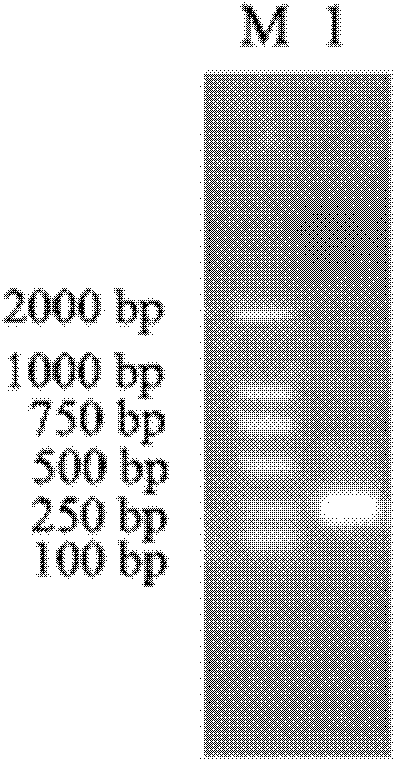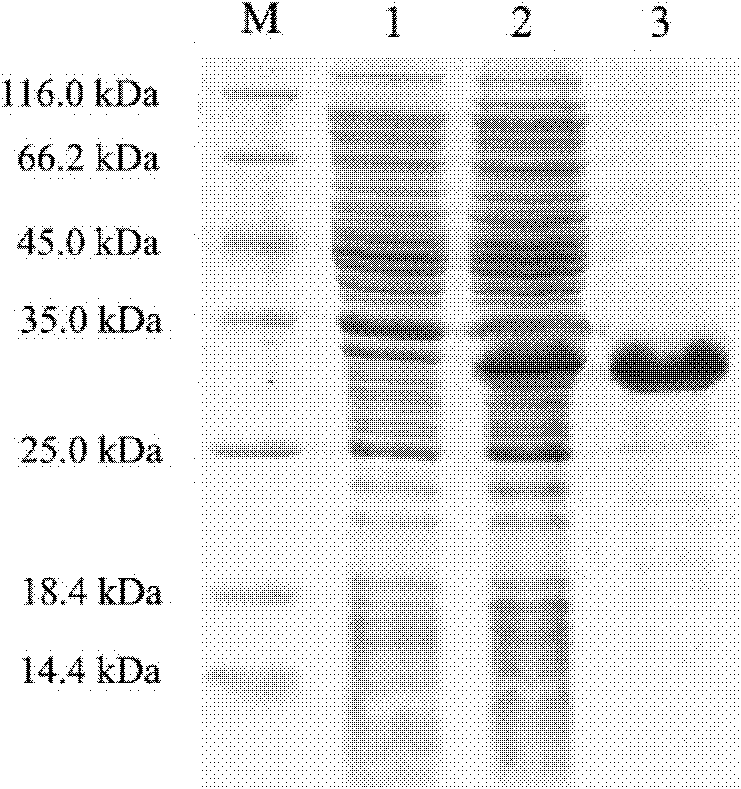PtCrustin-1 gene of Portunus trituberculatus, encoding protein of PtCrustin-1 gene and application of PtCrustin-1 gene
A technology of portunus trituberculatus and gene coding, which is applied in the field of molecular biology, can solve the problem that the research on Portunus trituberculatus Crustin is still scarce, and achieve significant antibacterial activity
- Summary
- Abstract
- Description
- Claims
- Application Information
AI Technical Summary
Problems solved by technology
Method used
Image
Examples
Embodiment 1
[0024] The PtCrustin-1 gene of Portunus trituberculatus is the base sequence shown in SEQ ID No.1.
[0025] The sequence listing SEQ ID No.1 is:
[0026]
[0027]
[0028] (a) Sequential features
[0029] ●Length: 1105bp (effective length 86-382)
[0030] ●Type: base sequence
[0031] ●Chain type: single chain
[0032] ●Topological structure: linear
[0033] (b) Molecular type: double-stranded DNA
[0034] (c) Assumption: No
[0035] (d) Antisense: no
[0036] (e) Original source: Portunus trituberculatus
[0037] (f) Specific name: CDS
[0038] The specific operation of building is as follows:
[0039] 1. Extraction of total RNA from Portunus trituberculatus and purification of mRNA: use Trizol reagent from Invitrogen Company to extract total RNA from Portunus trituberculatus, and use Oligitex mRNA purification kit from QIAGENE Company to purify mRNA.
[0040] 2. Construction of the cDNA library of Portunus trituberculatus: the cDNA library was constructed usi...
Embodiment 2
[0059] The base sequence of Portunus trituberculatus PtCrustin-1 is described in SEQ ID No. 1 in the sequence table, and the amino acid sequence is described in SEQ ID No. 2 in the sequence table.
[0060] The sequence listing SEQ ID No.2 is:
[0061]
[0062] It has a complete coded protein containing 98 amino acids, of which 1-21 amino acids of the coding sequence are signal peptides, and the mature peptide contains 77 amino acids, with a predicted molecular weight of 8.78kDa and an isoelectric point of 4.97. The mature peptide has a typical type I Crustin pattern structure, including a cysteine-rich region (Cys-rich region) and a WAP domain (WAP domain). Among them, the four cysteine residues in the cysteine-rich region are relatively conservatively arranged in a C-(X3)-C-(X8-12)-C-C pattern; the WAP domain contains 8 cysteine residues acid residues, which are capable of forming four disulfide bond cores (4-DSC).
[0063] To obtain the recombinant protein of Portun...
Embodiment 3
[0066] In vitro antibacterial test of PtCrustin-1 recombinant protein from Portunus trituberculatus:
[0067] 1. Culture and preparation of microorganisms: TSB medium for Vibrio alginolyticus at 28°C, TSB medium for Pseudomonas aeruginosa at 37°C, LB medium for Staphylococcus aureus at 37°C, and LB medium for Micrococcus luteus 37°C, Pichia pastoris with YPD medium at 28°C, culture each of the above strains with a shaker at 220rpm / min to make the bacterial concentration reach the logarithmic growth phase, dilute the cells with 50mM Tris-HCl (pH=8.0) buffer respectively, Make the number of colonies per milliliter of bacteria liquid about 1×10 3 .
[0068] 2. Determination of antibacterial activity of recombinant protein PtCrustin-1: Utilize the recombinant protein PtCrustin-1 obtained in the above-mentioned examples to use Tris-HCl (50mM, pH=8.0) gradient dilution (1, 1 / 2, 1 / 4, 1 / 8, 1 / 16, 1 / 32, 1 / 64, 1 / 128, 1 / 256), 50 μl was added to a sterile flat-bottom 96-well plate (Costa...
PUM
 Login to View More
Login to View More Abstract
Description
Claims
Application Information
 Login to View More
Login to View More - R&D Engineer
- R&D Manager
- IP Professional
- Industry Leading Data Capabilities
- Powerful AI technology
- Patent DNA Extraction
Browse by: Latest US Patents, China's latest patents, Technical Efficacy Thesaurus, Application Domain, Technology Topic, Popular Technical Reports.
© 2024 PatSnap. All rights reserved.Legal|Privacy policy|Modern Slavery Act Transparency Statement|Sitemap|About US| Contact US: help@patsnap.com










